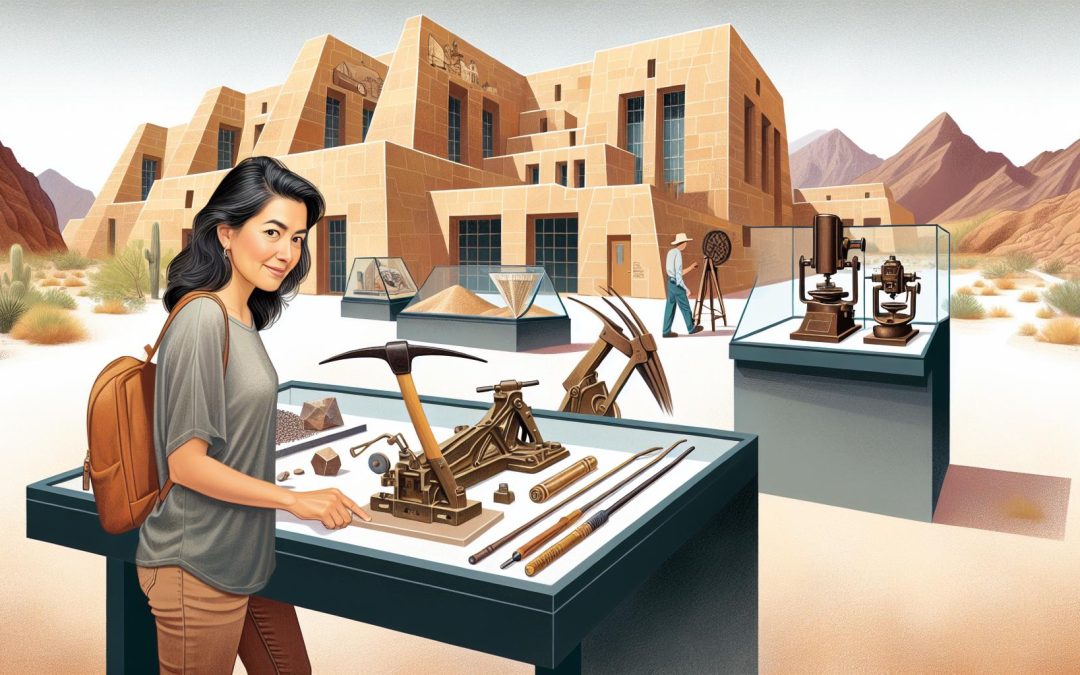Scottsdale, Arizona, isn’t just a haven for golf enthusiasts and spa-goers; it’s also a treasure trove of history waiting to be explored. From the ancient ruins of Native American civilizations to the more modern architectural feats, there’s a story around every corner.
I’ve always been fascinated by how places evolve over time, and Scottsdale is no exception. It’s a city that beautifully blends its rich past with a vibrant present. So, I decided to dive into its historical landmarks, and let me tell you, I was not disappointed. Join me as I uncover some of Scottsdale’s most captivating historical sites that are absolutely worth a visit.
Exploring Old Town Scottsdale
When I first set foot in Old Town Scottsdale, it felt like stepping into a beautifully preserved slice of the Wild West, but with a modern twist. The area is bustling with energy and is a hub for art galleries, specialty shops, and restaurants that all pay homage to the city’s heritage. What struck me most was how Old Town Scottsdale has managed to maintain its historical charm while adapting to the needs of contemporary visitors.
Wandering through the streets, I was captivated by the historic buildings, each telling its own story of Scottsdale’s past. One standout visit was the Little Red Schoolhouse, which now houses the Scottsdale Historical Museum. It’s a place where history comes alive, offering insights into the life and times of early Scottsdale residents. This landmark is a must-visit for anyone wanting to delve deeper into the local history.
Another spot that caught my eye was the Old Adobe Mission. Built in the 1930s, this historical church is one of Scottsdale’s oldest standing structures and offers a glimpse into the spiritual lives of early settlers. It’s remarkable how these landmarks have been preserved, providing a window to the past in the heart of a modern city.
The juxtaposition of old and new in Old Town Scottsdale is fascinating. It’s a place where you can enjoy a gourmet meal in a building over a century old, or buy contemporary art in a gallery that respects the architectural integrity of its historical surroundings.
As I explored further, I realized that each corner of Old Town offers a new discovery. Whether you’re interested in shopping, dining, or historical exploration, there’s something here for everyone. My day in Old Town Scottsdale was filled with unexpected finds, and I can’t wait to share more of what makes this place uniquely captivating.
Discovering the Ancient Hohokam Pima National Monument

My journey through Scottsdale’s historical landmarks took me to a place less talked about but immensely significant: the Ancient Hohokam Pima National Monument. Nestled on the outskirts of modern Scottsdale, this monument offers a glimpse into the lives of the Hohokam people, who thrived in this area from around 450 to 1450 AD.
The Hohokam are renowned for their advanced irrigation canals, some of which form the basis of modern Phoenix’s water system. Standing amidst the remnants of these canals, I was struck by the sheer ingenuity of these ancient engineers. The canals, spanning hundreds of miles, enabled the desert to bloom, supporting a large and sophisticated society.
The monument itself is somewhat of a hidden gem, not as readily accessible as other historical sites in Scottsdale. Yet, the journey there felt like a pilgrimage, each step taking me further back in time, closer to understanding the lives of people who mastered desert living so many centuries ago.
Visitors won’t find the usual tourist amenities here, which I think adds to the monument’s charm. It’s a place for quiet reflection, for imagining the bustling communities that once stood on these grounds. Informational plaques dot the site, providing insights into the Hohokam’s daily lives, their diets, their social structures, and their eventual mysterious disappearance.
What struck me most profoundly was the spirit of resilience and ingenuity that seemed to echo through the ruins. The Hohokam Pima National Monument serves not just as a testament to the past, but also as a reminder of humanity’s ability to adapt, innovate, and thrive in the harshest of environments.
Visiting the Historic Scottsdale Main Street Arts District
After uncovering the ancient treasures at the Hohokam Pima National Monument, I steered my journey back into the heart of Scottsdale to explore the vibrant Main Street Arts District. This cultural enclave is where the old and new fuse seamlessly, providing an eclectic mix of galleries, studios, and artisan shops that capture the essence of Southwestern artistry.
Strolling down the district, I was engulfed by the charm of the Old West, with each gallery door opening to a world of contemporary and traditional art. From Native American jewelry and crafts to modernist paintings and sculptures, the diversity was astounding. Scottsdale’s Main Street Arts District is not just a place to observe art but to experience the living breath of the city’s creative spirit.
What’s remarkable is the District’s ability to host an array of art events throughout the year. The renowned Scottsdale ArtWalk takes place every Thursday evening, allowing visitors like myself to meander through galleries, often with a glass of wine in hand, enjoying live music, and the company of artists and art enthusiasts alike. These events not only highlight the local artistic talent but foster a sense of community that’s palpable in the air.
For someone eager to dive deeper into the local art scene, several galleries offer workshops and classes. I found myself participating in a pottery class, getting my hands dirty, and learning about the traditional techniques that have been passed down through generations. This hands-on experience provided a unique way to connect with the area’s rich cultural heritage.
Among the myriad of galleries, one that particularly stood out was the Signature Gallery. Home to a stunning collection of sculptures, paintings, and glasswork, it epitomizes the artistic diversity found within the district. Here, art isn’t just viewed; it’s felt, making each visit a personal journey through the emotions and stories captured by the artists.
Touring the Taliesin West – Frank Lloyd Wright’s Architectural Masterpiece
Nestled in the foothills of the beautiful McDowell Mountains, Taliesin West isn’t just a visit; it’s an experience. As I made my way through this historic landmark, the spirit of Frank Lloyd Wright seemed almost tangibly present, walking alongside me. This was, after all, his winter home, studio, and architectural campus. Constructed in 1937, Taliesin West was Wright’s bold endeavor to implement his philosophy of organic architecture—blending structures with their surroundings.
One of the first things I noticed was how the buildings and walls were made from local desert rocks, embedded in wood, creating a harmonious relationship with the desert landscape. The natural light flooding into the vast, open spaces revealed Wright’s genius in designing with nature, not against it. Natural light played a pivotal role in the ambiance of each room, altering perceptions and moods throughout the day.
As I explored the living quarters, drafting studio, and various other structures, I couldn’t help but sense the innovative atmosphere that Wright fostered. It was here that he and his apprentices experimented with architectural designs that would become iconic worldwide. Passages and terraces led me on a journey through indoor and outdoor spaces that felt seamlessly connected.
Guided tours offered insights into not just the architecture but also Wright’s life, his inspirations, and his profound impact on modern architecture. What struck me most was learning about the adaptability of his designs. Wright continually modified Taliesin West to suit evolving needs and technologies, demonstrating his belief in architecture as a living entity.
Visitors also have the chance to engage in workshops and special events at Taliesin West, which continue to support and promote the principles of Wright’s theories on design and society. Whether it’s photography classes capturing the beauty of this architectural masterpiece or lectures on Wright’s philosophies, Taliesin West remains a vibrant center for education and creativity.
Walking through Taliesin West, it was easy to see why it’s not only a National Historic Landmark but also a living testament to Wright’s revolutionary architectural perspectives. The blend of innovation and harmony with nature left a lasting impression on me, emblematic of Wright’s enduring influence on architecture and design.
Delving Into Scottsdale’s Mining History at the Goldwater Memorial

When I first stumbled upon the Goldwater Memorial, I wasn’t quite sure what to expect. Nestled in the heart of Scottsdale, this historic site offers a fascinating glimpse into the region’s rich mining history. The Memorial, named after a prominent Arizona family, serves not just as a tribute but as an educational journey through time.
As I explored the well-preserved artifacts and informative plaques, I was struck by the tough conditions miners endured. The Memorial showcases early mining equipment and technology, allowing visitors to appreciate the evolution of mining from backbreaking manual labor to more mechanized methods. I couldn’t help but imagine the arduous daily lives of those seeking fortune in the unforgiving Arizona terrain.
One of the most captivating aspects of the visit was learning about the Goldwater family’s significant contributions to the mining industry and how their efforts were instrumental in the development of Scottsdale and the surrounding areas. This insight provided a personal connection to the history unfolding before my eyes, bridging past and present.
What impressed me most, however, was the Memorial’s commitment to education. Interactive exhibits engage visitors of all ages, making history accessible and compelling. By participating in a simulated mining experience, I gained a hands-on understanding of the mining process, an experience that textbooks simply can’t replicate.
Though the Goldwater Memorial might not boast the architectural allure of Taliesin West, its charm lies in its authenticity and the stories it tells. It’s a testament to the resilience and ambition of those who shaped Scottsdale’s early days. As a lover of history and storytelling, visiting the Memorial reminded me of the importance of preserving our past to inspire future generations.
Conclusion
Exploring Scottsdale’s historical landmarks has been an eye-opening journey for me. Walking through the Goldwater Memorial, I felt a deep connection to the miners’ stories and the rich history that shaped this city. It’s clear that preserving these sites isn’t just about keeping the past alive; it’s about inspiring future generations. Whether it’s the architectural beauty of Taliesin West or the rugged history of the Goldwater Memorial, Scottsdale offers a unique glimpse into the past that I’m grateful to have experienced. I hope my adventures inspire you to explore these landmarks and find your own connection to Scottsdale’s storied past.







